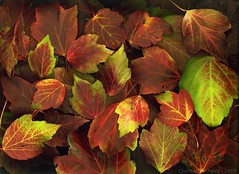The online discussion boards and forums sometimes make me laugh.
The first fit of laughter was started from a comment by the editor of canonrumors.com. He was talking about a future 5D MkIII at 28+ mpixel requiring new sharper lenses to take full advantage of the sensor resolution. If I weren't laughing so hard...
The problem with the editor's utterances is in the math. Or lack of understanding thereof.
Let's look at the physical dimension of the Canon 7D/60D/T2i 18 mpixel sensor. Divide the number of information nodes in an image file from these cameras by the size of the sensor in mm's for whichever file dimension you choose. Now look at the answer. It should be 236. Divide this number by two to calculate the number of line pairs per mm and read/note/remember the answer. It will 116 line pairs per mm.
Run a similar calculation on the current 5D MkII using it's sensor size in mm's divided into the file output node number in the same dimension as the sensor size you just used. Divide by two. The answer? It should be 79 line pairs per mm.
After extensive testing against a USAF Resolution Test Chart, I have confirmed that every single lens I own (including Sigma, Canon L, Canon non-L, Nikon, Pentax, and Zeiss) out-resolves my 7D's sensor from wide open. You read that correctly. Read 'um and weep if you need to.
Now think about this a moment. OK. Times up. If lenses were the limiting factor to image resolution, wouldn't it make sense that the Canon 18mpixel crop sensor cameras would require a sharper lens than the full frame 5D MkII? Seriously. Think about it until you see this is true.
So how on earth will new lenses be required due to some mysteriously wonderful resolution of a 28mpixel 5D MkIII? If my lenses are good enough for the 7D/60D/T2i, they will remain overkill for any new full frame sensor'd camera anyone on earth makes until the sensor size (use your math skills to confirm this again, please) cross beyond 60mpixels.
Not unrelatedly, Sigma lenses are derided in the online forums. If it's not image quality its AF noise. If it's not AF noise, it's about AF accuracy... well... OK... there may be something to this last item.
I recently picked up a Sigma 28-70mm f/2.8 lens for a whopping $200. Canon's own 28-70 f/2.8 L still fetch north of $700. So I thought I'd try something cheap. I could use the optical speed in darkly lit video situations like bellydance gigs for Nagasita, but I don't want to break the bank over a lens that I would seldom use.
Mounting the Sigma to a 5D MkII, I noticed the focus was consistently on the nearest item, regardless of where the AF nodes lit up in the viewfinder. I was irked. This seemed to confirm the blabbering masses nattering nuttiness of whackdom.
I thought about the problem and wondered how Sigma could make such a mess of the AF system. Couldn't they reverse engineer the Canon AF system any better than this?
Then I had an idea to see if selecting one AF point in the 5D MkII made any difference in how the Sigma focused. I had read somewhere that someone had tried this with limited success. I tried it anyway.
Guess what? the AF is spot on every single time I hit the shutter release. Independent of which AF point I select, as long as that AF point is placed over the desired focus location the image is sharp exactly there every single time.
This little discovery leads me to think that Sigma's engineering problem may be related to their electronics. Perhaps Sigma really did not correctly reverse engineer Canon's AF system. Maybe they got stuck confirming a single AF node? I can't believe that, but...
OK. Believe it or not, I can live with this defect. For many stills photo situations I select the AF point myself anyway.
Now I have a very cheap, and even though I haven't covered it here, the lens is VERY sharp from wide open!!! (something again about out-resolving the sensor), usable optic. Did I mention the Sigma was cheap? Need I mention the optic is sharp? It's cheap too.
Need I mention that viewers of my images cannot tell the difference between images made with this cheap usable merely competent optic and my $1200 L-glass?


